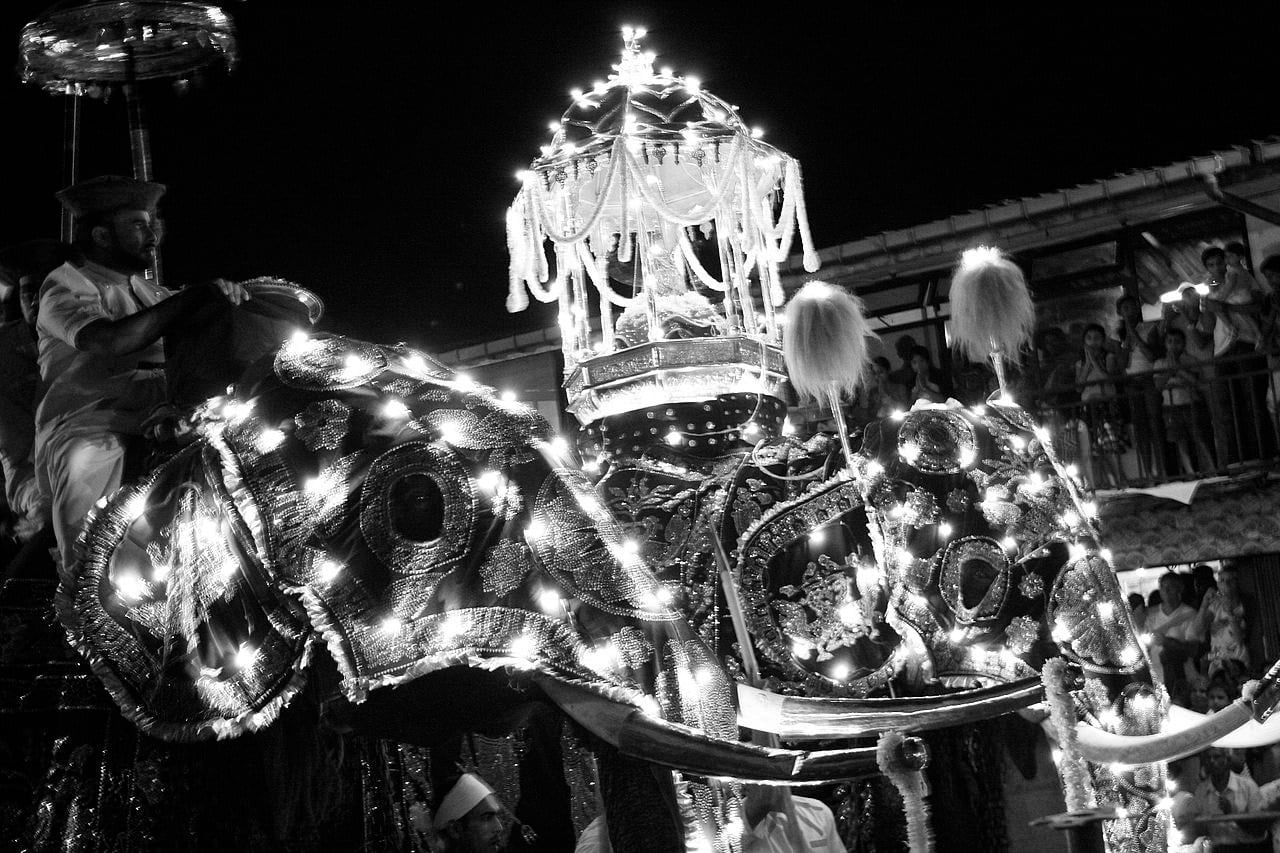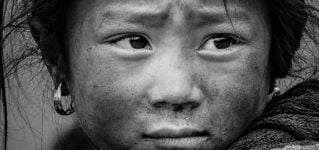Discover Myth and Folklore of Buddha’s Tooth Relic and the Kandy Esala Perahera Festival. Where sacred Elephants have always been part of the festival as symbols of abundance and fertility.
In this Article
Mahanama Thero’s writing of the first part of the Mahavamsa was greatly influenced by the Dipavamsa – the earliest extant chronicle of Sri Lanka.
As translated into English by BC Law the Dipavamsa at the beginning states:
“Listen to me !
I shall relate the chronicle of the Buddha’s visit to the island, the arrival of the Tooth Relic and Bodhi Tree, the advent of the Buddha’s doctrine, the rise of the teachers, the spread of Buddhism in the Island and the coming of [Vijaya] the Chief of Men”
The Temple of the Tooth- Sri Dalada Maligawa
The UNESCO Heritage site is an active temple complex and a ritual center of Buddhism in Sri Lanka. The 17th-century Temple of the Tooth (Sri Dalada Maligawa) is believed to house the left upper canine tooth of the Lord Buddha himself.
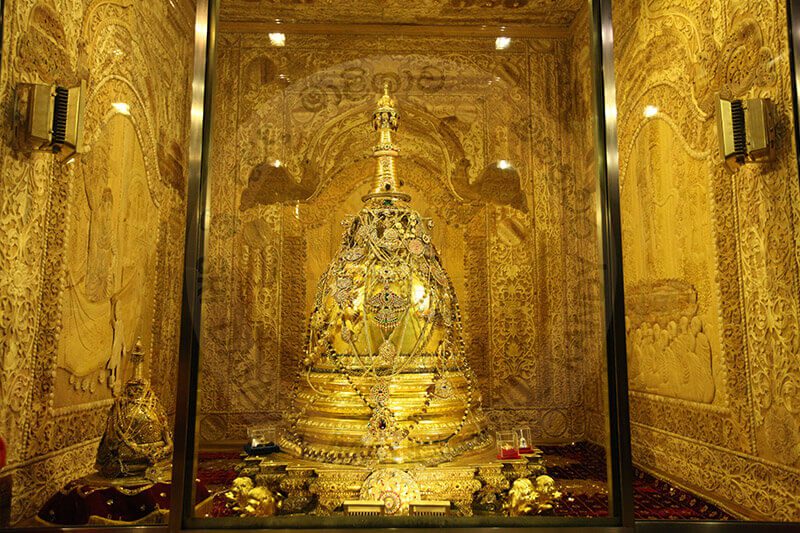
This precious relic attracts white-clad pilgrims, bearing lotus blossoms and frangipani, every day. The whole complex is wonderfully scented with flowers and incense.
The tooth relic is kept in the upper floor in the chamber called “Vadahitina Maligawa”. The door to this chamber is covered with gold, silver and ivory.
The relic of the tooth shrine is fronted by large elephant tusks.
The Origin of Sri Dalada Perahera Tradition
The Buddha in His 80th year reached Kusinara (Kushinagar) from Gijjakuta (Rajagaha) for the final passing away (Mahaparinirvana). Venerable Ananda, the Chief Attendant of the Buddha asked the Buddha,
“How should one treat the Perfect One’s remains?”
The Buddha replied that the remains of a Universal Monarch (Cakravarti) are enshrined and monuments built at the four crossroads. The Perfect One’s remains too should be treated similarly.
The Perfect One’s monument should be built at the four crossroads; and whoever shall put flowers, or scents on it, or whitewash it, or shall worship it, or feel confidence in His heart there, that will be long for His welfare and happiness”.
Thus Buddha sanctified the worship of His Sacred Relics. The Relics were distributed among eight kings by Brahamin Dona and the Moriyans who came late had to be satisfied with the ashes of the fire and Dona took to himself the measure with which he apportioned the Relics. They all built Stupas enshrine the Sacred Relics, ashes and the measure.
The Sacred Tooth Relic was not enshrined but held by several kings which are not recorded and was venerated in India.
On the Sacred Tooth Relic prior to arrival in Sri Lanka
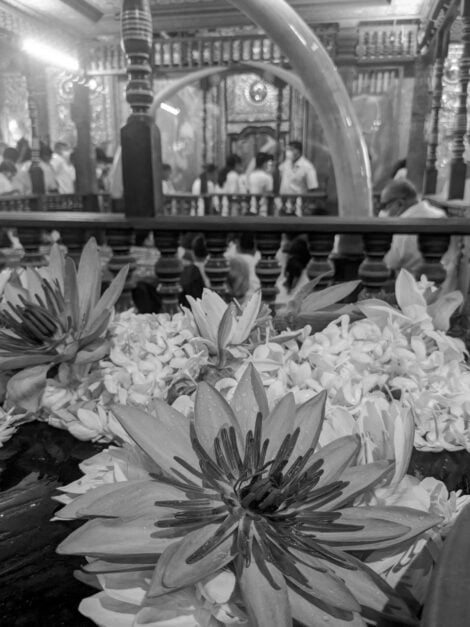
The Final Extinction of the Buddha took place at Kusinara in India in 543 BC Following the cremation of the body of Buddha, the left Tooth Relic of Buddha from the Sandalwood funeral pyre was secured by Arahath (supremely enlightened) Kema who presented it to King Brahmadatta of Kalinga.
The king of Kalinga had a temple constructed for the veneration of the sacred Dalada- Tooth Relic. It was the first Dalada maligawa (Sinhala: temple of the Tooth Relic) in the world.
Since then the royal dynasty of Kalinga had been the guardian kings of the sacred Tooth Relic for 800 years till the Dalada’s arrival in Sri Lanka.
MYTH: How the Sacred Tooth Relic of the Buddha – the Dalada came to Sri Lanka
Clashes in the Kalinga kingdom suggested moving the relic to protect it. So it was smuggled to Sri Lanka in 313 AD, hidden in the coils of Princess Hemamali’s hair who fled the Hindu armies besieging her father’s kingdom in India.
Prince Dhantha and his consort Princess Hemamali, embarked at Tamralipti, in the mouth of the Ganges. Both landed in Lankapattama harbour, Sri Lanka, during Siri Meghavanna kingdom.
After an adventurous journey, they reached Anuradhapura where they gave the Tooth Relic to the king. The king ordered to build a temple, the Meghagiri Vihara, in Anuradhapura, the main city of the time.
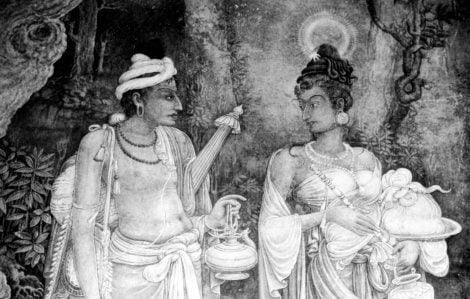
As the ancient kingdoms of Sri Lanka moved from one capital to another, the Tooth Relic was also moved to various temples.
Ever since it was brought to Sri Lanka, the Tooth Relic has been venerated in the form of ritual ceremonies. It immediately became an object of great reverence and was enshrined in a series of nested jeweled reliquaries.
The tooth was brought out for special occasions and paraded on the backs of elephants, which are sacred to the Buddha.
Myth and Folklore of Buddhas Tooth Relic and the Kandy Esala Perahera Festival
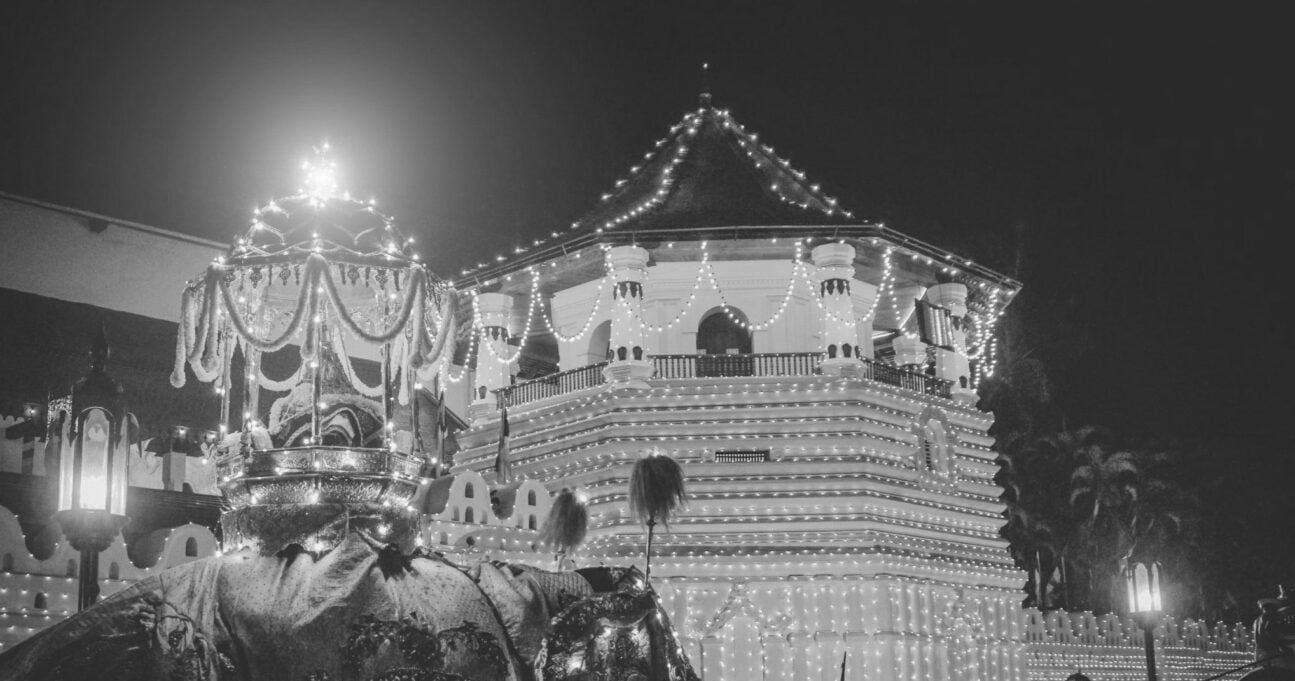
The Esala Perahera festival is a synthesis of Hindu and Buddhist beliefs; a fusion of two “peraheras” (processions) – the Esala and Dalada (Tooth Relic).
Esala
The Esala is thought to date back to the 3rd century BC and was the ritual enacted to invoke the blessings of the gods for rain, fertility, successful crops and good health.
The Sinhala people connect the Dalada to the galaxy of deities they share with Hinduism – though with: variations. These deities are:
- Vishnu,
- Natha,
- Kataragama,
- goddess Pattini
– all connected with animistic practices and deeply embedded Pre- Buddhist fertility rituals.
The Kings of the Kandyan Kingdom encouraged the establishment of ‘devalas’ to these deities, within the precincts of the royal capital – where they yet flourish and are an integral component of the Perahera. By devala means offering, like food and drink as well as gifts of cloth, coins, gold, and silver often accompanied by eulogies addressed to the particular resident deity.
Dalada
The Dalada is the Tooth Relic ceremony introduced in the 4th century BC during the reign of King Kirthi Sri Meghavarna. In those days, the Tooth Relic was considered private property of the King and the public never got a chance to worship it. However, King Rajasinghe (1747–1781) decreed that the Tooth Relic be taken in procession for the masses to see and venerate. That was the beginning of the modern Perahera.
There was a strong conviction particularly among Sinhala Buddhists that the legitimate claim for the Sinhala Throne could be made by the possessor of the sacred Tooth Relic.
The belief that the sacred Tooth Relic was a harbinger of rain never diminished even after the British occupation of Kandy. When the perahara was suspended by the British rulers in 1815 a severe drought and a crop failure followed. Due to public protest the perahara was allowed. It was reported that torrential rains followed the initiation of perhara rituals.
After the Kandyan Kingdom fell to the British, the custody of the Relic was handed over to the Buddhist clergy. In the absence of the king, a lay custodian, called the “Diyawadana Nilame” was appointed to handle the Dalada.
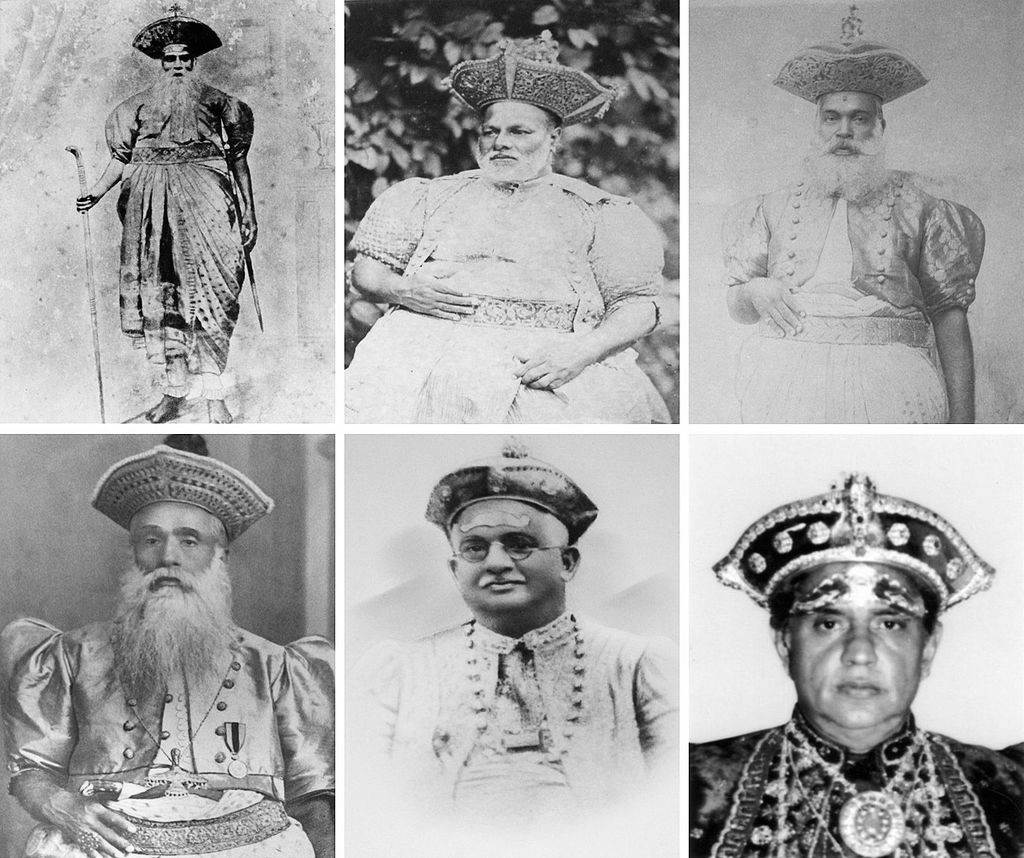
Until now he is the chief custodian of the Temple of the Sacred Tooth and he holds the responsibility of organizing the Perahera festival.
Kandy Esala Perahera
The Esala Perahera is a fifteen day festival exhibiting traditional music, fire- and whip dancing and drumming, ending with the elephants procession of the Tooth Relic.
Devale Perahera
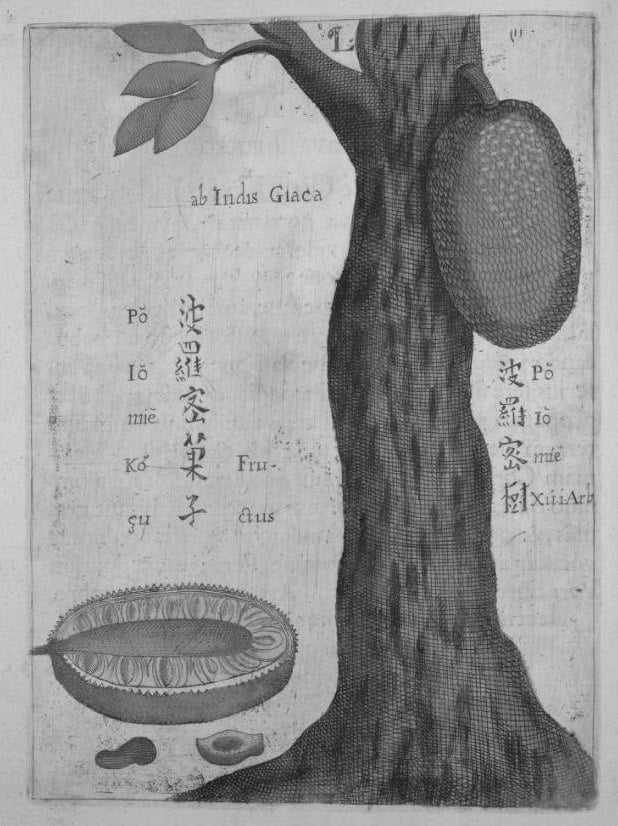
Kap situweema – planting of a sanctified young jackfruit tree
A few days before the new moon, the Basnayake Nilames of the four devales go in search of a young jack tree (Artocarpus integrifolia), which has borne no fruit, and clear the ground around the young tree.
In earlier the tree chosen was the ‘asala’ (Cassia fistula) tree.
When the kap-poles are brought to each Devale they are placed on a clean mat where fresh mango and margosa leaves are spread. That ritual is associated with the Pattini cult. Goddess Pattini, according to mythical literature, was born out of a mango and her husband was killed under a margosa tree.
Then the kap poles (about 60 cm in length cut from a tree) are planted within the premises of each devale at an auspicious hour. Kapa symbolizes god Indra to signify fertility and prosperity.
When the kap poles are installed in each devale premises the officiating priest (kapurāla) circumambulates the kap pole on three consecutive days carrying the insignia of the respective deity.
For the next five nights, the “Devale Peraheras” take place within the premises of the four Devales, accompanied by music and drumming, flag and canopy bearers, spear man and the Ran Ayudha, the sacred insignia of the Gods.
The Kumbal Perahera
On the sixth night, the Kumbal Perahera begins and continues on for five days.
The relic casket, which is a substitute for the Tooth Relic, is placed on the Maligawa Elephant, a tusker. In the evening, the Maligawa Perahera joins the awaiting Devale Peraheras and leads the procession.
Whip-crackers and fireball acrobats clear the path, followed by the Buddhist flag bearers. Then, riding on the first elephant, is the official called Peramuna Rala (Front Official).
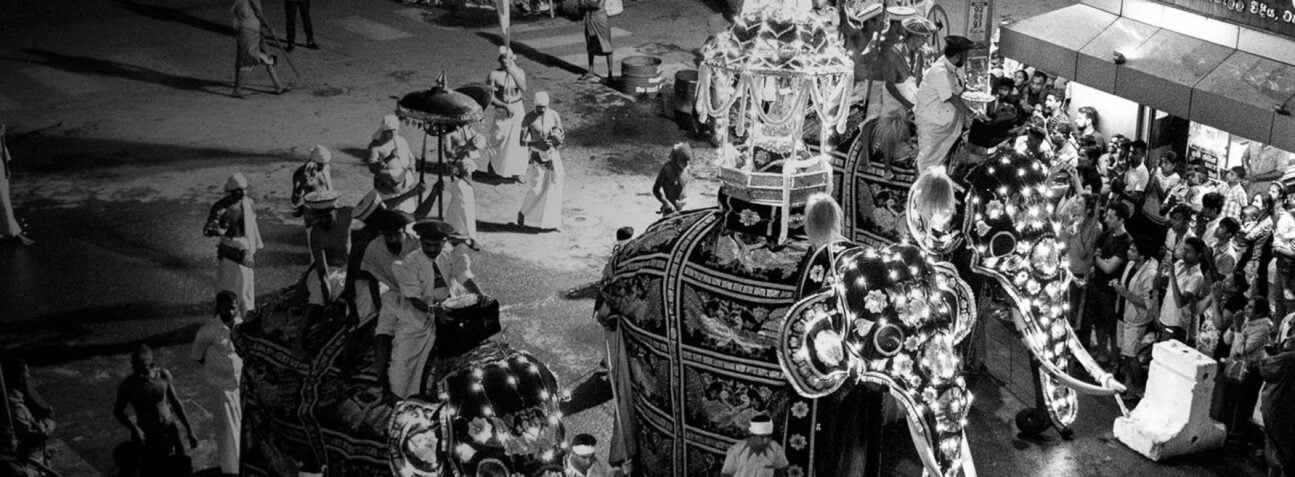
He is followed by Kandyan Drummers and Dancers who enthrall the crowd, and are themselves followed by elephants and other groups of musicians, dancers and flag bearers.

A group of singers dressed in white heralds the arrival of the Maligawa Tusker carrying the the Tooth Relic.
The Diyawadana Nilame (traditionally required to do everything in his power to ensure rain in the correct season) walks in traditional Kandyan – clothed splendor after the tusker.
The Randoli Perahera
After five nights of the Kumbal Perahera, the Randoli begins. Randoli refers to palanquins on which the Queens of the ruling Kings traditionally traveled. In the days of the Kings, the Chief Queen of the Kings paraded in this procession in palanquins.
Since the ancient kingdom of Anuradhapura, the Sacred Tooth Relic of the Buddha – the Dalada – is the palladium granting legitimacy to the kings of the Sinhala Kingdom. Chiefs would visit the Randoli Perahera and show respect to the King.
Diya Kepeema and the Day Perahera
After a further five nights of the Randoli Perahera, the pageant ends with the Diya Kepeema, which is the water cutting ceremony at the Mahaweli River at Getambe, a town a few miles from Kandy.
The water-cutting ceremony
Only a section of the overnight procession accompanied by the priests in charge of the four shrines of Natha, Vishnu, Kataragama and Pattini proceed to the ferry at Getambe and await the first light of the day for the performance of the ritual.
When the first rays of sun fell they draw a circle in water with a sword. the water within that circle is taken to fill the pitchers.
This ceremony symbolically releases a supply of water for the coming year (the Tooth Relic is traditionally believed to protect against drought) and divides the pure from the impure – it might also relate to the exploits of the early Sri Lankan king, Gajabahu (reigned 114–136 AD), who is credited with the Moses-like feat of dividing the waters between Sri Lanka and India in order to march his army across during his campaign against the Cholas.
A Day Perahera is held to mark the ceremony.
HISTORICAL TALES OF THE SRI DALADA PERAHERA TRADITION
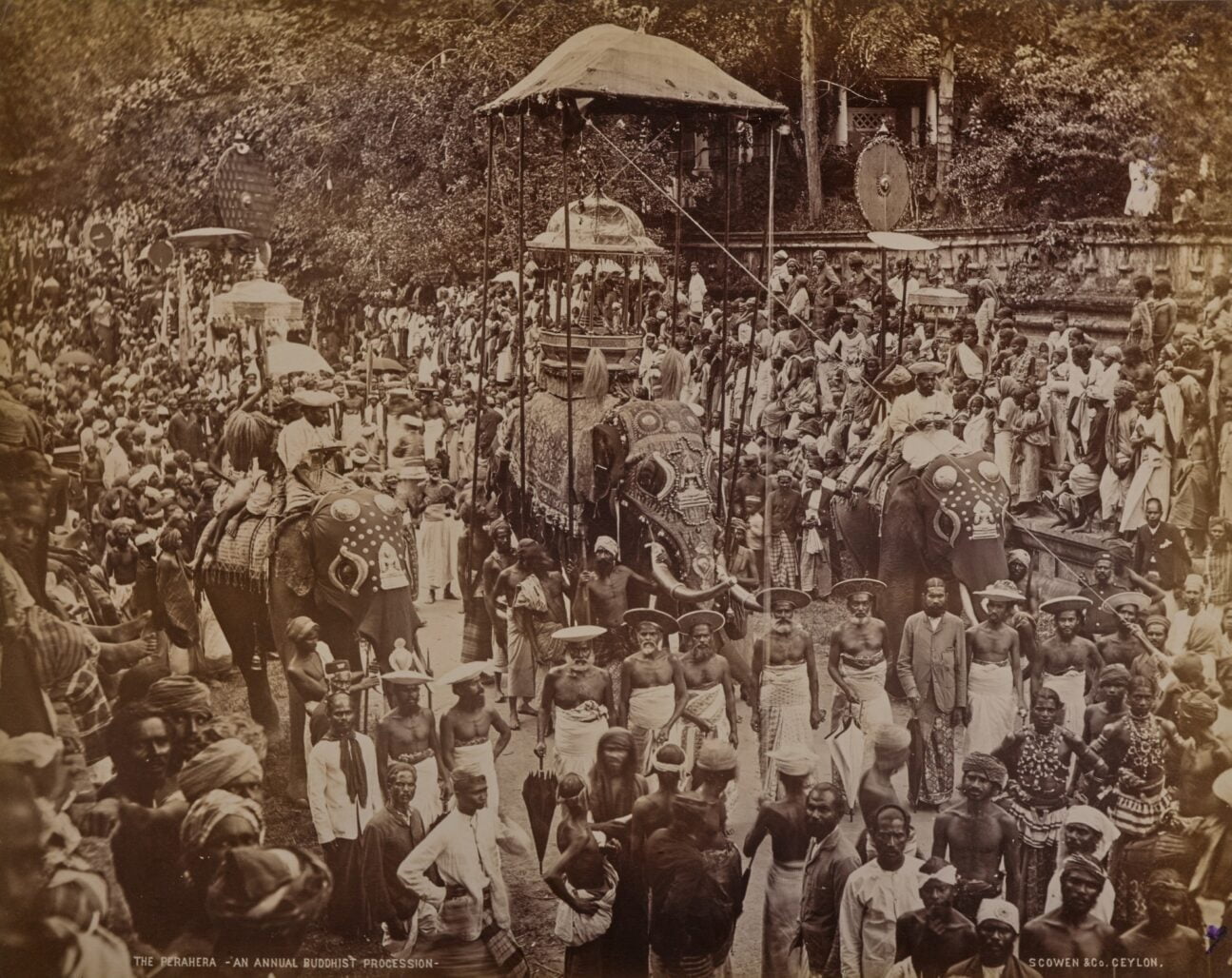
These glorious processions have been vividly described by observers from centuries ago.
Fa- Hien
The most lucid account of the Sri Dalada Perahera is in the travel records of Chinese pilgrims Monk Fa-Hien, who visited Sri Lanka in the fifth century AD
“By the side of the King’s Palace is the Vihara of the Buddha’s Tooth, several hundred feet high, brilliant with jeweles and ornamented with rare gems. Above the Vihara is placed an upright pole on which is fixed a great padmaraja (ruby) jewell…
The Tooth of the Buddha was always brought forth in the middle of the third month. Ten days beforehand the king grandly caparisoned a large elephant on which he mounted a man dressed in royal robes, who could speak distinctly, and the man went round beating a large drum, describing the life and the virtues of the Buddha, and announcing to the public; ‘Behold, ten days after this, Buddha’s Tooth will be brought forth, and taken to the Abhayagiri Vihara. Let all and each, whether monks or laymen, who wish to amass merit for themselves, make the road smooth and in good condition, grandly adorn lanes and by ways, and provide abundant store of flowers and in cense to be used as offerings to it.”
“When this proclamation was over, the king placed for exhibition on both sides of the road, the 500 different bodily forms in which the Buddha had appeared in his previous births according to the Jataka stories. All their figures were brightly colored and grandly executed, looking as if they were alive.
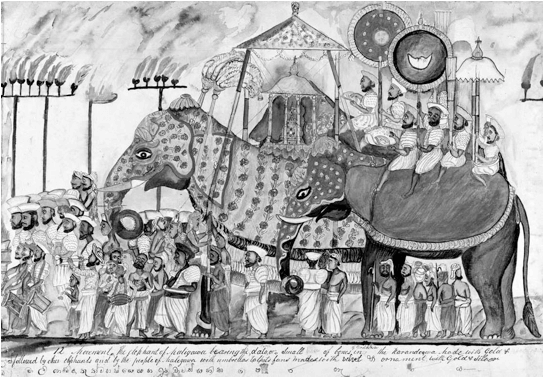
After this, the Tooth of the Buddha was brought forth, and was carried along in the middle of the road. Everywhere on the way offerings were presented to it, and thus it arrived at the hall of the Buddha in the Abhayagiri Vihara.
There the Monks and the laity collected in crowds, burned incense, lighted lamps and performed all the prescribed services, day and night, without ceasing till 90 days had been completed, when the Tooth was returned to the Vihara within the city. On Poya Days, the Doors of the Vihara were opened, and forms of ceremonial reverence were observed according to the rules”.
~ Fa-Hien Travel Records.
Hiuen Tsiang
Another Chinese pilgrim Monk Hiuen Tsiang, who did not visit Sri Lanka but, was in India studying at the famous Nalanda University for many years in the 7th century. From accounts he gathered from visitors from Sri Lanka to India, he says:,
“The King, three times a day, washes the Tooth of the Buddha with perfumed water, sometimes with powered perfumes. Whether washing or burning incense, the whole ceremony is attended with a service of the most precious jewels”.
Hieun Tsiang Book XI.
Robert Knox
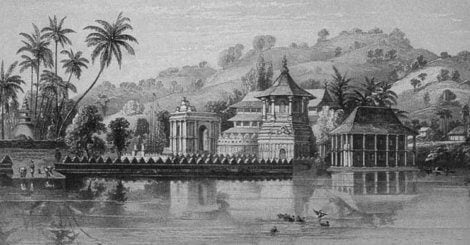
Robert Knox (1660-1679), an Englishman who was a captive of the king of Kandy, writing about the Kandy Perahera tells:
“The Priest bringeth forth a painted stick, about which strings of flowers are hanged, and so it is wrapped in branched silk, some part covered, and some not; before which the people bow down and worship; each one presenting him with an offering according to his free will.
These free will offerings being received from the people, the priest takes his painted stick on his shoulder, having a cloth tied about his mouth to keep his breath from defiling this pure piece of wood, and gets up upon an elephant all covered with white cloth, upon which he rides with all the triumph that king and kingdom can afford, through all the streets of Kandy.
But before him go, first some forty or fifty elephants with brass bells hanging one each side of them, which tingle as they go.”
“Next follow men dressed up like giants, which go dancing along agreeable to a tradition they have, that anciently there were huge men that could carry vast burdens and pull up trees by the roots.
After them go a multitude of drummers and trumpeters and pipers, which make such a great and loud noise that nothing else besides them can be heard. Then followed the company of men dancing along and after these women of such castes or trades as are necessary for the service for the pagoda as potters and washer-women, each caste go in companies by themselves, three and three in a row, holding one another by the hand; and between each company go drummers, pipers and dancers”.
“After these comes an elephant with two priests on his back; one whereof is the priest before spoken of, carrying the painted stick on his shoulder, who represents Allout neur Dio [Aluth Nuwara Deiyo] that is the God and maker of heaven and earth.
The other sits behind him, holding a round thing, like an umbrella, over his head, to keep off sun or rain.
Then within a yard after him on each hand of him follow two other elephants mounted with two other priests, with a priest sitting behind each, holding umbrellas as the former, one of them represents Cotteragon Dio [Kataragam Deiyo] and the other Potting Dio [Pattini Deiyo].
These three Gods that ride here in company are accounted of all other the greatest each one having his residence in a pagoda. Behind go their cook-women, with things like whisks in their hands to scare away flies from them; but very fine as they can make themselves.”
“Next after the Gods and their attendance go some thousands of ladies and gentlewomen, such as are of the best sort of the inhabitants of the land, arrayed in the bravest manner that their ability can afford, and so go hand in hand three in a row; at which time all the beauties in Zelone (Ceylon) in their bravery to go to attend upon their Gods in their progress about the city.
Now are the streets also all made clean, and on both sides all along the streets poles truck up with flags and pennons hanging at the tops of them, and adorned with boughs and branches of coconut trees hanging like fringes and lighted lamps all along on both sides of the streets, both by day and night…Last of all go the Commanders sent by the King to see these ceremonies decently performed, with their soldiers after them…..Formerly the king himself in person used to ride on horseback with all his train before him in this solemnity, but now he delights not in these shows.
“Later Knox describes the water-cutting ceremony and says: “Just at the hour of full moon they ride out unto a river and dip silver pots full of water, which is carried back with them into the temple, where they are kept till the year after and then flung away. So the ceremony is ended for that year.”
D.H. Lawrence
D.H. Lawrence (1885-1930), the British poet and novelist, writing about the Esala perahara, says
“Perpetual fire-laughing motion among the slow shuffle of elephants”
Sacred Elephants and Buddhism
Raja Atha

‘Aja Atha’, also known as ‘Maligawa Raja’ was a Sri Lankan tusker elephant which belonged to the Sri Dalada Maligawa in Kandy (Temple of the Tooth Relic). Raja participated at the annual Esala Perahara procession in Kandy for a period of 50 years and was the sacred casket bearer of the final Randoli Perehera for 37 years.
He was one of the most celebrated elephants in Asia during his lifetime, and was world famous for his noble behavior.
On August 20, 1986 former Sri Lankan President J.R. Jayawardene declared Raja as a national treasure in recognition of his valuable services to the religion and culture of Sri Lanka.
His death prompted the government to order a day of national mourning in Sri Lanka. A postage stamp was issued in its memory on December 12, 1989, and also the 1000 Rupee bill, with Raja and his Mahout [Muslim trainer] Umar Lebbe Panicker from Eravur in Batticola.
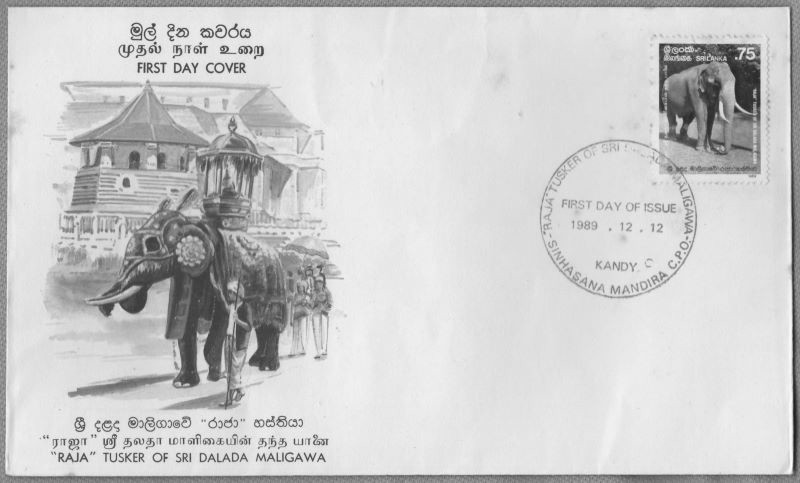
Raja’s stuffed remains are presently kept in a special museum within the grounds of the Temple of the Tooth.
Elephants have always been part in the Esala Perahera as they are symbols of abundance and fertility. Most Buddhist temple keep Elephants for worshiping and working.
Elephants in Buddhist mythology:
- Airavata is a mythological white elephant who carries the Hindu god Indra. It is also called ‘abhra-Matanga’, meaning “elephant of the clouds”, or the ‘clouds who walk the Earth’, instrumental in attracting the vital rains for harvest time. But also ‘Naga-malla’, meaning “the fighting elephant”; and ‘Arkasodara’, meaning “brother of the sun”.
- One day Lord Buddha’s mother, Queen Maya, dreamed, that a young white elephant, holding a lotus flower in its trunk, entered her womb from the right. This prognosticated dream was interpreted to mean that she had conceived a son.
- Many years later, it was an elephant that looked after the Buddha, providing him with food and shelter in the sylvan solitude of the Paraleyya wilderness.
- Again, it was the elephant Nalagiri that charged furiously at the Buddha, only to fall prostrate at his feet in complete subjugation.
- The Precious Elephant is a symbol of the strength of the mind in Buddhism. Exhibiting noble gentleness, the precious elephant serves as a symbol of the calm majesty possessed by one who is on the path.
- Ganesha has the head of an elephant and the body of a human. He is one of the best-known and most popularly worshiped deities in Hinduism. Ganapati is worshipped by both Vaishnavas (devotees of Vishnu) and Saivites (devotees of Shiva). The son of Shiva and Parvati, Shree Ganesha, is the God of good luck and auspiciousness and is the Dispeller of problems and obstacles. He is also worshiped as the God of wisdom, wealth, health, celibacy, fertility and happiness. People call upon him at the beginning of any task, because his blessing supposedly ensures success.
Elephants in Sri Lanka:
They have always been integral to the island, to this day, they are prominent in religious and civil ceremonies. The Asian elephant (Elephas maximus) has a long history of association with humans which goes back to at least 4000 years.
- They carry sacred relics in colorful processions,
- They fight for sports or battle,
- their image adorns numerous temples and house entries,
- they are said to bring good fortune to those who cross their path.
~ ○ ~
Keep exploring:
Works Cited & Multimedia Sources
- 2009 Kandy Esala Perahera begins
- 2010 Kandy Esala Perahera begins August 15
- 2011 Kandy Perahera season begins
- Ancient rituals at Sri Dalada Esala Perahera
- Ancient Sri Lankan Buddhist festival
- Asian Elephant Secretariat
- Asian Elephants in Culture & Nature: Recent submissions. University of Kelaniya. Sri Lanka.
- Bandara Ranjith and Tisdell Clem. The History and Value of the Elephant in Sri Lankan Society. Working Paper No. 133. Department of Economics. University of Colombo. Sri Lanka. School of Economics. The University of Queensland. Australia. 2005. https://econpapers.repec.org/paper/agsuqseee/55092.htm
- Dalada Maligawa ground plan
- Dominic Sansoni photo gallery
- Elephant lore – in myth, legend, religion and war. https://web.archive.org/web/20211018044145/http://www.lankalibrary.com/myths/elephant.htm
- Esala Perahara rituals
- Gupta S. K. . Elephant in Indian Art and Mythology. 1983.
- Gupta S. K. . Elephant in Indian Art and Mythology. 1983.
- Hindu Mythology. http://www.aghori.it/mythology.htm
- Historical places associated with Dalada Maligawa
- History of the Temple of the Sacred Tooth Relic
- https://en.wikipedia.org/wiki/Human-elephant_conflict_in_Sri_Lanka
- In Honor of the Sacred Tooth Relic
- Kandy –the final abode of the Sacred Tooth Relic
- Kandy Esala Perahera
- Kandy Esala Perahera photo gallery by Michael Sarnacki
- Kandy Perahera: Are the time honoured traditions in jeopardy?
- Kandy Esala Perahera. Wikipedia, the free encyclopedia.
- Lankapura: Historic Images of Ceylon.
- Life in the Kingdom of Kandy as seen by Robert Knox
- Pictures: Al Jazeera in Asia Kandy Esala Perahera wiki commons
- Nimmo Suzie. The White Elephant and The Buddha. The significance of the elephant on the ceiling of Cave 1 at Ajanta. Working Paper. 2016. https://www.researchgate.net/publication/310914633_The_White_Elephant_and_The_Buddha_The_significance_of_the_elephant_on_the_ceiling_of_Cave_1_at_Ajanta
- Ranasinghe N. Dilshani. Evolution of Elephant Clothes and Use of Decorations in KandyPerahara Sri Lanka; Special Reference to Sri Dhalada Maligawa Pageant.
- Rites and rituals of the Sri Dalada Perahera
- Raja (elephant). Wikipedia, the free encyclopedia.
- Robert Knox’s impressions of the Kandy Perahara
- Sacred Tooth Relic – Palladium of the Rulers
- Sacred Tooth Relic and the Esala Perahera
- Sacred’ elephants abused during Sri Lankan Buddhist festival
- Saga of the Sacred Tooth Relic and Kandy Perahera
- Sri Dalada Maligawa Temple of the Sacred Tooth Relic
- Sri Dalada Maligawa: Temple of the Tooth Relic
- Sri Dalada Perahera in the 19th Century
- Sri Dalada, Kandy Perehara and the Full Moon Poya Day of Esala
- Temple of the Tooth: An Introduction
- The depository of Tooth Relic during the Cōḷa Occupation of Anuradhapura? https://www.archaeology.lk/temple-of-the-sacred-tooth-relic-kandy-a-living-heritage/
- The depository of Tooth Relic during the Cōḷa Occupation of Anuradhapura?https://www.archaeology.lk/temple-of-the-sacred-tooth-relic-kandy-a-living-heritage/
- The Esala festival and the Dalada Perahara
- The Kandy Äsala Perahära by Lorna Dewaraja .2018.
- The Kandy Esala Perahera
- The Kandy Esala Perahera: An Introduction
- The origin of Sri Dalada Perahera
- The Sacred Tooth Relic as Rain-Maker
- The Significance of Esala Poya
- Velikkara Inscription at Polonnaruwa
- Video: https://kandyperaherabookings.com/perahera.mp4
- Yatinuwara Dodanwala Esala Perahera
